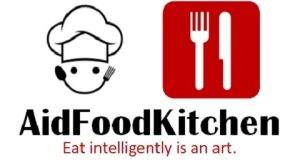Grocery stores have many meat cuts, but the finest steaks are often reserved for restaurants, leaving the everyday shopper in a quandary. Many grocery owners prioritize selling premium steaks to eateries, believing they might fetch a better price and recognition.
This practice can make customers feel short-changed as they hunt for that perfect steak for their home-cooked meals. Consequently, steak enthusiasts often find themselves navigating the aisles, trying to discern the best from the rest, and wondering if that perfect cut is even attainable at their local store.
What is The Best Steak to Buy at a Grocery Store?
The best steak to buy at a grocery store in the U.S. is Prime steak, found at Wegmans and Whole Foods Market, which refers to top-tier, organically raised, grass-fed beef renowned for its superior quality and taste. Additionally, I prefer Prime Certified Angus Beef from Shoprite supermarket.
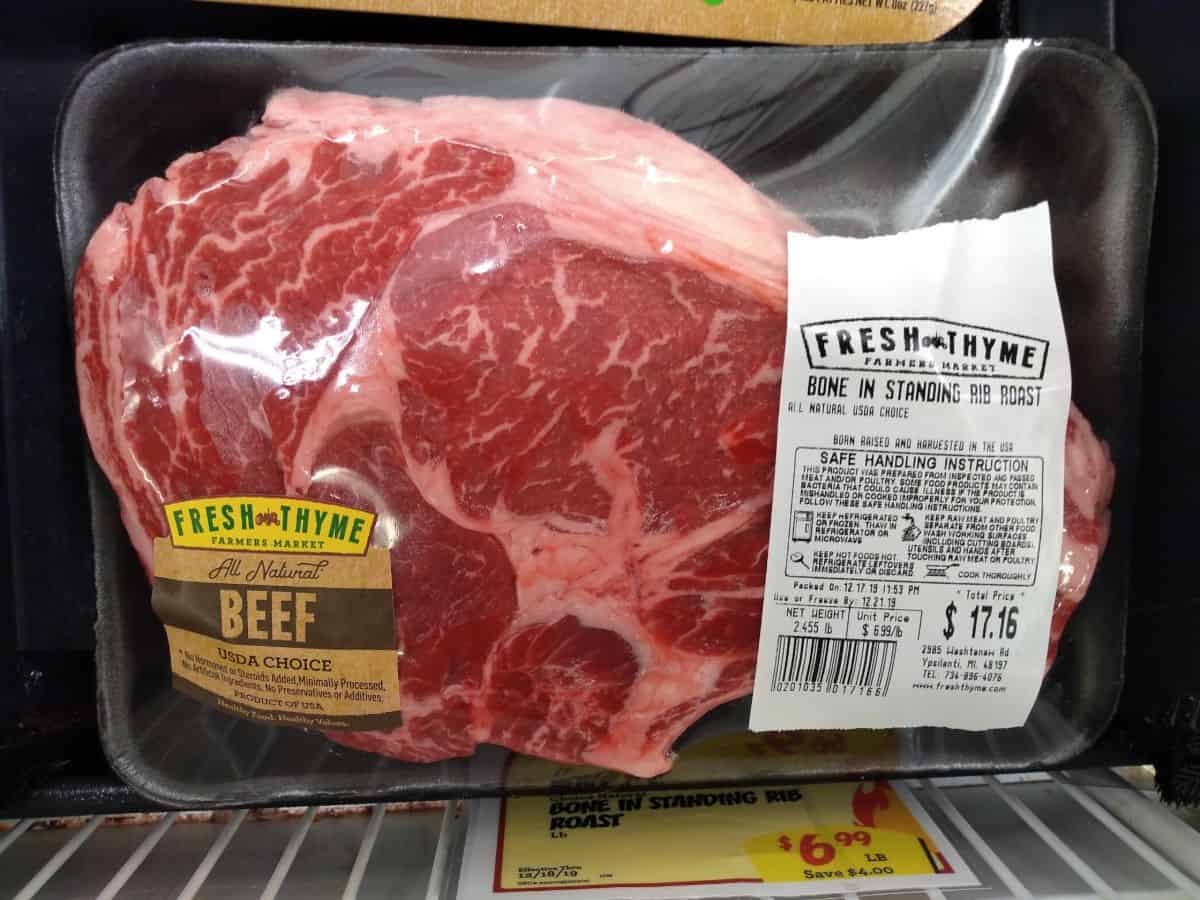
In the U.S., “Prime” refers to the highest grade of beef as designated by the United States Department of Agriculture (USDA). This grading system evaluates beef for its marbling, maturity, and other quality indicators. Prime beef generally has abundant marbling, meaning the meat contains more fat intermingled with lean meat. This gives the beef its distinct flavor and tenderness.
Prime beef is typically the most expensive grade and is often found in high-end restaurants and specialty markets.
While prime beef is designated as the highest grade of beef according to the USDA, many grocery stores carry specific brands offering Prime-grade beef. Here are some brands you might find in grocery stores offering USDA Prime beef:
- Certified Angus Beef – Recognized widely for its quality and consistency, they offer a Prime line of their beef.
- Swift & Company – Offers USDA Prime cuts among other grades.
- Excel—Part of the Cargill family of beef producers, Excel offers a range of beef products, including USDA Prime.
- NatureSource – Specializes in natural beef, and they offer USDA Prime cuts.
- Chairman’s Reserve – Premium beef brand offering Prime cuts.
- Strauss – Known for its grass-fed beef, it also offers a USDA Prime beef line.
- Wegmans – Their in-house brand offers USDA Prime cuts, particularly in their larger or flagship stores.
- Whole Foods Market – Often sources local or regional Prime beef under their store brand.
- Kroger’s Private Selection – Their premium line may include USDA Prime cuts in select locations.
- Costco’s Kirkland Signature – Costco offers USDA Prime beef under their Kirkland Signature brand in some locations.
Grocery Stores Average Steak Prices
- Chip steak – fresh: $11.64/lb.
- Porterhouse steak: $14.69/lb.
- Rib eye steak: $22.04/lb.
- Rib steak: $18.47/lb.
- Sirloin steak: $13.22/lb.
- Skirt steak: $22.88/lb.
- Strip steak: $16.37/lb.
- T-bone steak: $13.32/lb.
- Tenderloin steak: $26.87/lb.
Based on our research, the average price of steak is approximately $17.61 per pound. The list shows that Tenderloin steak ($26.87/lb) appears to be the most expensive, while Chip steak – fresh ($11.64/lb) is on the more affordable end of the spectrum. This average gives a mid-point for steak prices on the platform, which can be helpful for consumers aiming to budget for meat purchases.
However, it’s essential to understand that the type of steak, its cut, and the quality can play a significant role in determining its price. For instance, tenderloin is generally known as a premium cut, reflected in its higher cost. In contrast, cuts like sirloin or T-bone might be relatively more affordable but can still offer a rich flavor and tenderness when cooked properly.
The best grocery stores to buy steak at are Wegmans and Food Markets. Wegmans and Whole Foods Market are premier U.S. grocery chains celebrated for their commitment to premium products, such as the reasonably priced and high-quality Wegmans Choice Rib Eye Steak ($71.35).
Additionally, these grocery stores offer stringent animal welfare standards. USDA Prime-grade steaks with unparalleled taste and tenderness, especially those sourced from ethically raised cattle and labeled organic, make them stand out for steak enthusiasts.
Please see the presented facts:
Prime Steaks from Wegmans and Food Markets
Wegmans and Whole Foods Market are esteemed grocery chains in the U.S., known for their commitment to quality products.
I prefer Wegmans Choice Rib Eye Steak. FAMILY PACK is $71.35, only $14.99/lb. The offer has the best cost-quality ratio among all steaks in the market.
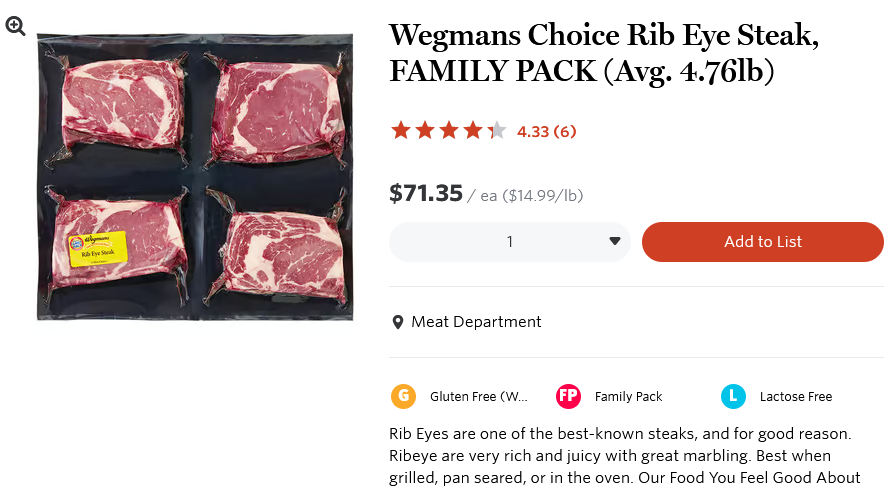
When it comes to Prime beef steaks sold at these establishments, there are certain expectations regarding taste and quality:
Taste:
- Rich Flavor: Prime beef’s defining feature is its abundant marbling – the streaks of fat interspersed within the lean meat. This marbling melts when cooked, imbuing the meat with a rich, buttery, intense, and robust flavor.
- Tenderness: Prime beef’s high-fat content results in a tender steak that melts in your mouth. The fat ensures that the meat remains juicy even when cooked.
- Enhanced by Feed: Many Prime beef offerings at stores like Wegmans and Whole Foods Market are from cattle that have been grass-fed or finished on grain. This diet can influence the beef’s flavor profile, often resulting in a more nuanced, earthy taste in grass-fed varieties.
Quality:
- Top Grade: USDA Prime is the top grade, which means these steaks represent the peak of quality in terms of marbling, texture, and tenderness.
- Ethical Rearing: Whole Foods Market, in particular, is known for its stringent animal welfare standards. When you purchase a Prime steak from Whole Foods, it’s not just about the grade but also the assurance that the animal was raised humanely.
- Transparency: Both Wegmans and Whole Foods emphasize transparency in sourcing. Consumers often have access to details about where the beef comes from, the farms’ practices, and the cattle’s diet.
- Freshness: These stores prioritize the freshness of their meat products. Prime steaks at Wegmans and Whole Foods are often presented in a way that showcases their freshness, with bright red hues and clear, non-cloudy packaging.
- Natural & Organic Options: Especially at Whole Foods, many Prime steaks also come with organic labels, meaning they’re free from synthetic hormones and antibiotics.
Certified Angus Beef (CAB) – Prime Grade
Taste:
- Deep, Rich Flavor: Certified Angus Beef, especially of the Prime grade, is renowned for its depth of flavor. The Angus breed contributes to a beef flavor profile that many connoisseurs regard as full-bodied and savory.
- Outstanding Marbling: CAB is sought after for its consistent marbling. The prime designation ensures abundant marbling, and when this is combined with the inherent qualities of the Angus breed, the result is a steak that’s supremely juicy and tender.
- Buttery Texture: The extensive marbling in CAB Prime steaks melts during cooking, leading to a buttery mouthfeel. This provides a melt-in-the-mouth experience, with each bite being juicy and flavorful.
Price:
At $23 per lb for Prime Certified Angus Beef, here’s what you’re paying for:
- Premium Quality: The price reflects the top-tier quality of the meat. Not all Angus beef achieves the Certified Angus Beef designation; there are ten strict criteria, and only about 1.5% of beef qualifies as CAB when you add the Prime designation, an even smaller fraction of cuts.
- Consistency: One reason people are willing to pay a premium for CAB is the consistency in quality. Whether you’re buying a steak today, a month from now, or a year later, the CAB brand promises a consistent taste and tenderness.
- Reputation: Certified Angus Beef has built a strong reputation over the years as one of the best beef brands. This brand value contributes to part of the price.
- Rearing Practices: CAB ensures that the cattle are raised under specific conditions that contribute to the quality of the meat. These practices can sometimes be more expensive than conventional methods, influencing the price.
Quality Steaks in Grocery Stores
Steaks are a favorite among meat enthusiasts, and various cuts bring unique flavor, texture, and cooking characteristics. Here’s an overview of some high-quality steaks you might find in grocery stores:
- Tenderloin – Eye Fillet:
- Taste & Texture: The tenderloin, or eye fillet, is one of the most tender cuts of beef. Its mild flavor and tenderness arise from its location on the animal; it’s a muscle that doesn’t work much.
- Best Cooking Methods: Grilling, pan-searing, roasting.
- Scotch Fillet (aka Ribeye):
- Taste & Texture: This cut is known for its rich marbling, which leads to an incredibly juicy and flavorful steak with a good mix of meat and fat.
- Best Cooking Methods: Grilling, pan-searing, broiling.
- Sirloin (aka Porterhouse or New York Steak):
- Taste & Texture: The sirloin is a balance between tenderness and flavor. It has less fat than the ribeye but is still very tasty.
- Best Cooking Methods: Grilling, pan-searing, broiling.
- T-Bone:
- Taste & Texture: This is a two-for-one cut! One side has tenderloin, and the other has a piece of sirloin. It offers a blend of tenderness and rich flavor.
- Best Cooking Methods: Grilling, broiling.
- Skirt:
- Taste & Texture: While not as tender as other cuts, the skirt steak is flavorful. It’s a thin cut with a good amount of marbling.
- Best Cooking Methods: Grilling, pan-searing. Often used in fajitas.
- Flank:
- Taste & Texture: Leaner than the skirt but still flavorful. It’s known for its pronounced beefy flavor.
- Best Cooking Methods: Grilling and broiling. To maximize tenderness, cut against the grain when serving.
- Rump:
- Taste & Texture: Less tender than sirloin but still very flavorful, with a firm texture.
- Best Cooking Methods: Grilling, pan-frying, roasting.
- Onglet (aka Hanger):
- Taste & Texture: Often referred to as the “butcher’s steak” because butchers would often keep it for themselves. It’s very flavorful, with a slightly chewy texture.
- Best Cooking Methods: Grilling, pan-searing.
When shopping for these steaks in grocery stores, always look for good marbling. The fat interspersed within the meat often leads to a juicier and more flavorful steak. The grade (e.g., Prime, Choice) can also indicate quality.
Let us analyze the most expensive beef:
Publix Beef Tenderloin Most Expensive Steak
$26 per lb: Publix Beef Tenderloin Overview
- Cut Origin: Beef Tenderloin is part of the T-bone or porterhouse steak, known for its premium quality.
- No Additives: Publix ensures its meat is raised without growth hormones or antibiotics.
- Diet: According to Publix, animals are provided a 100% vegetarian diet, but specifics on grass vs. grains aren’t publicly detailed.
- Rearing Practices: Publix’s GreenWise Angus claims humane raising practices, but exact standards aren’t disclosed. It’s unclear if these practices extend to other beef cuts in the store.
- Comparison with Competitors:
- Stores like Whole Foods assert their meats lack added growth hormones or antibiotics.
- At Publix, steaks primarily come from organically fed cows, ensuring freshness.
- Some brands ensure their meat is tested additive-free at slaughter, implying possible earlier treatments.
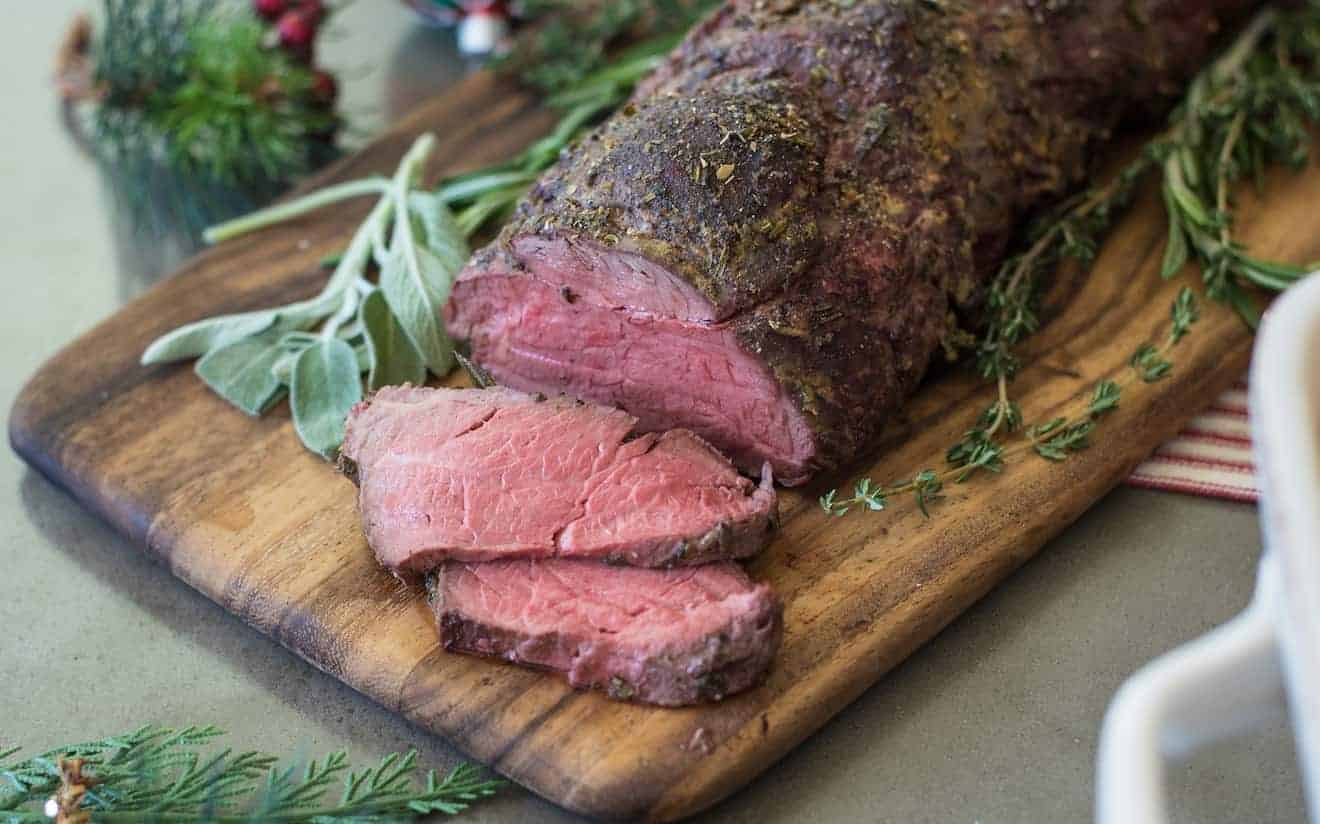
Publix Beef Tenderloin is revered for its rich flavor and exceptional tenderness, making it a favorite for steak enthusiasts. As a brand, Publix has built a reputation for offering high-quality products, and its beef tenderloin is no exception.
Many consumers trust the grocery chain for their commitment to sourcing without using growth hormones or antibiotics. The fact that the animals are fed a 100% vegetarian diet adds another layer of appeal for those who are conscious about the feed given to livestock. Furthermore, Publix’s GreenWise line, which includes Angus beef, emphasizes more humane raising practices.
While Publix might not detail every aspect of their sourcing and raising standards as explicitly as some other brands, the consistent quality of their beef tenderloin speaks for itself.
This consistency and the broader trust in the Publix brand make Publix’s beef tenderloin a preferred choice for many. Moreover, Publix is known for its excellent customer service, which can influence repeat purchases and loyalty to its meat products, including the beef tenderloin.
Whole Foods Grass-Fed Beef
Whole Foods Market’s grass-fed beef, priced around $38 per pound, reflects its commitment to superior quality, ethical sourcing, and rigorous animal welfare standards. This beef, rich in flavor and nutritional benefits, offers consumers a premium, ethically-raised option free from antibiotics, growth hormones, and animal by-products.
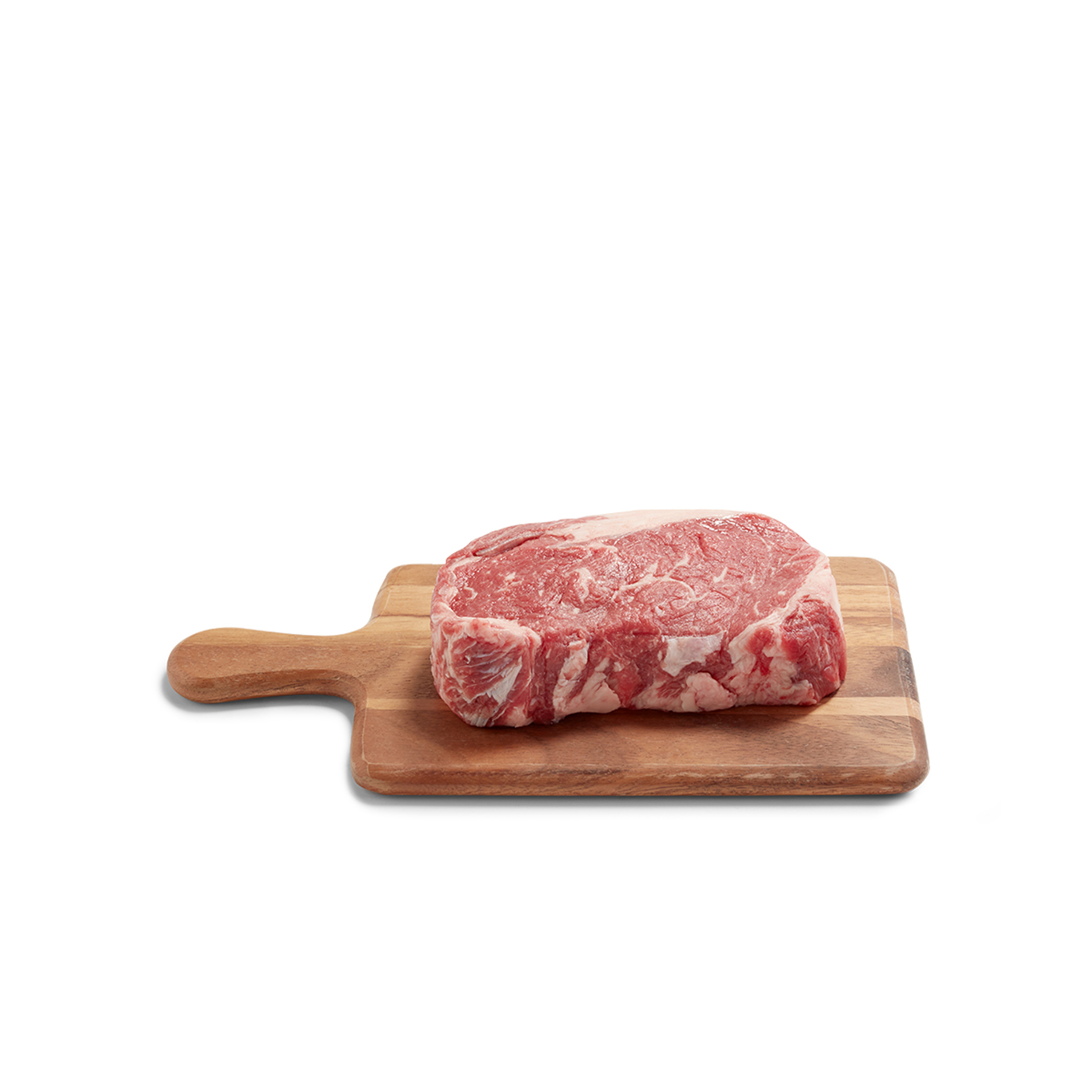
Whole Foods Market has long been recognized for its commitment to high-quality, ethically sourced products, and their approach to beef is no exception. Their offering of Prime beef is a testament to this commitment, specifically emphasizing grass-fed meat, considered a healthier and more environmentally friendly option.
The “grass-fed” label means the cattle were raised on a natural grass diet throughout their lives rather than being grain-finished. This grass-fed diet produces beef with a distinct flavor profile, often described as more “earthy” or “herbaceous.” Nutritionally, grass-fed meat is usually considered superior because it contains higher levels of beneficial omega-3 fatty acids and antioxidants than grain-fed beef.
Whole Foods Market’s rigorous commitment to quality is evident in its pricing, with its organic grass-fed beef fetching around $38 per pound. While this might be higher than conventional beef, many consumers are willing to pay a premium for healthy and ethically sourced beef.
But it’s not just about the feed. Whole Foods adheres to nearly a hundred animal welfare standards when sourcing meat. These standards extend across their meat offerings, encompassing beef, pork, chicken, sheep, goats, and turkey. Such a comprehensive approach ensures that animals are treated humanely, not just in their rearing but also in transportation.
One of Whole Foods’ standout policies is its staunch stand against antibiotics. They have a zero-tolerance policy, meaning they will not sell meat from any animal treated with antibiotics at any point in its life. This commitment is significant given the widespread use of antibiotics in conventional livestock farming, often used to promote growth or prevent disease in crowded conditions.
Additionally, Whole Foods prohibits using growth hormones and animal by-products in the feed, ensuring the purity and natural quality of its meat products. This meticulous approach to sourcing, combined with its commitment to transparency, means that customers can be confident in the purity of their purchase. There’s an assurance that the meat from Whole Foods is devoid of any undesirable additives, aligning with the store’s overarching mission to offer natural, high-quality products.
Conclusion
The best steak to buy at a grocery store depends on individual preferences for flavor, tenderness, and ethical considerations. While premium cuts like Prime beef from reputable stores like Whole Foods Market and Wegmans offer exceptional quality and taste, it’s essential to consider factors such as the beef’s origin, raising practices, and dietary feed.
Opting for steaks like grass-fed beef, which is both nutritious and ethically sourced, can enhance the culinary experience while ensuring peace of mind regarding the meat’s sustainability and humane treatment.
- How Many Tablespoons is One Clove of Garlic? - June 26, 2024
- How to Measure 3/4 Cup When You Don’t Have the Right Measuring Cup? - June 6, 2024
- How Much Does Cooked Pasta Weight Compare To Dry? - April 30, 2024
